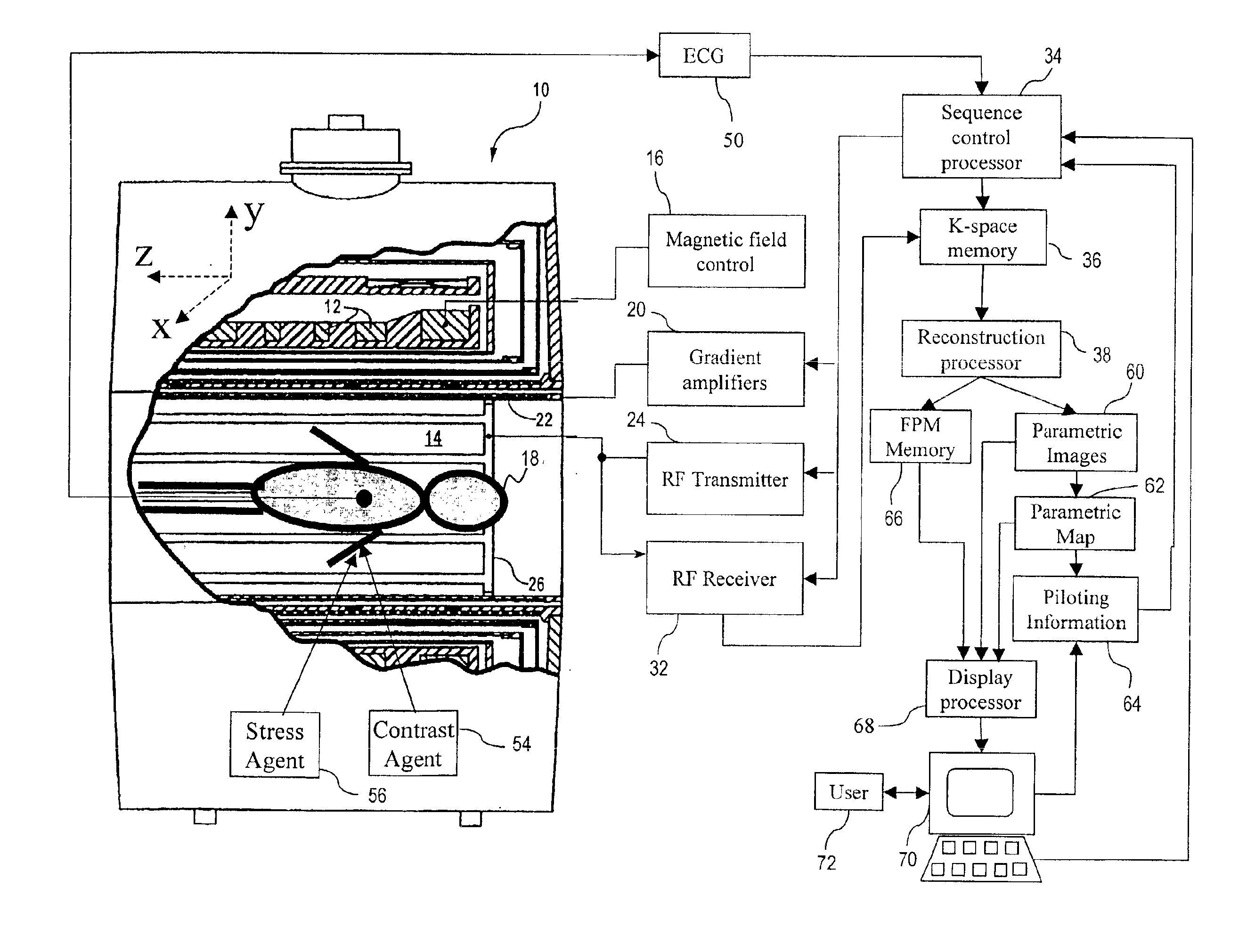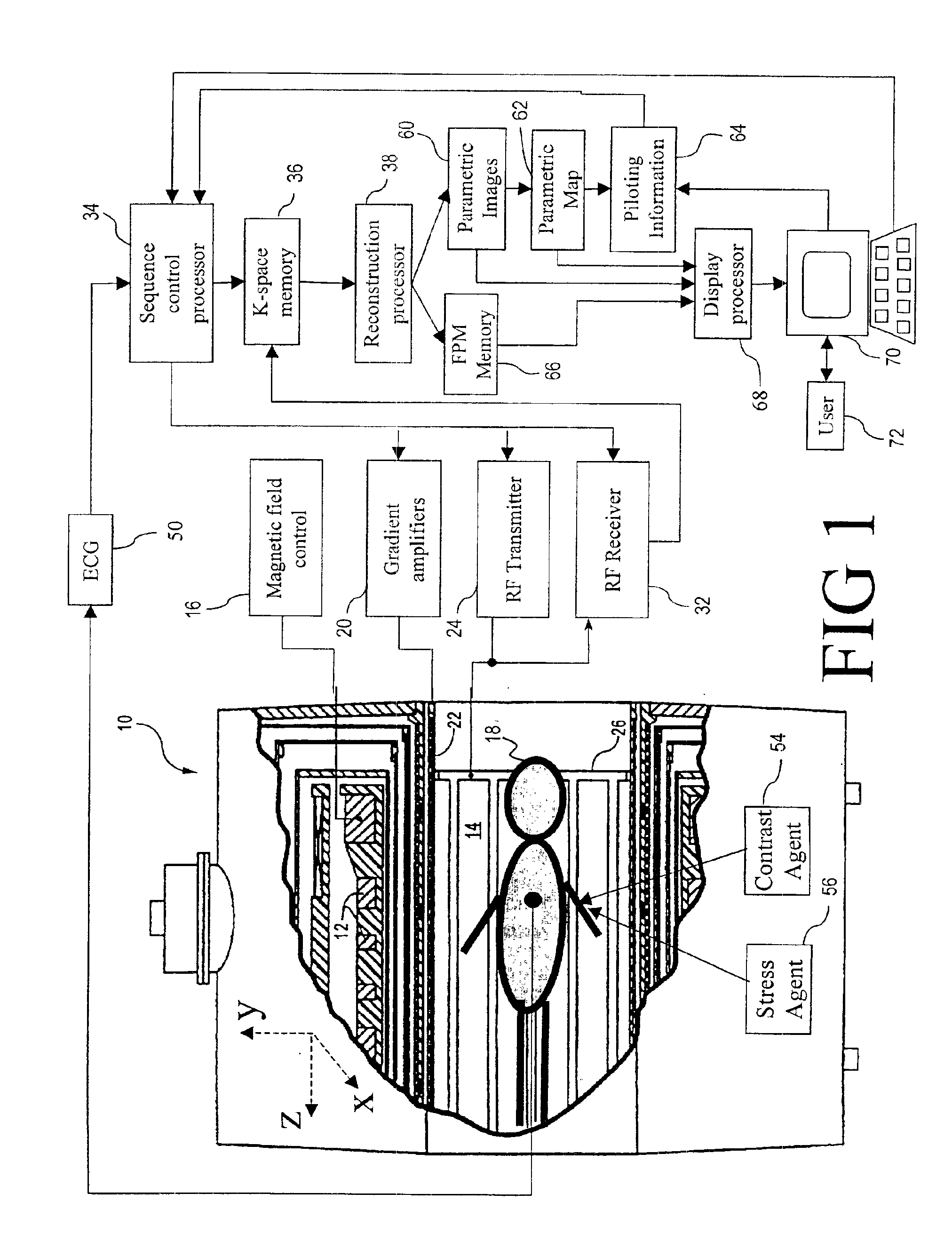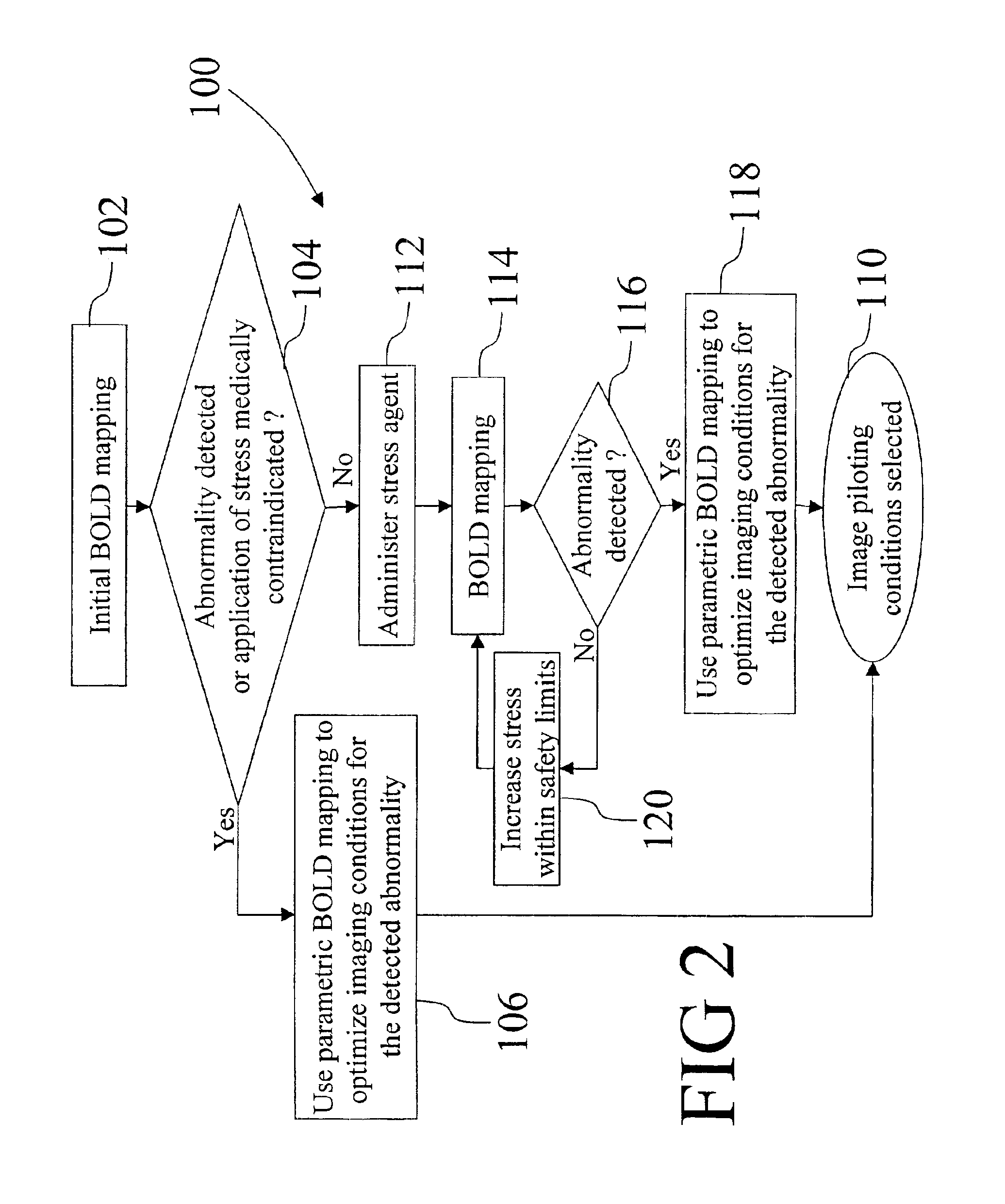Method and apparatus for evaluation of contrast agent uptake based on derived parametric images
a contrast agent and parametric image technology, applied in the field of medical imaging arts, can solve the problems of inconsistent diagnosis, cardiac disease is a leading health problem, and myocardial infarction, and achieve optimal efficiency, maximize the probability of acquiring high-quality functionals, and improve clinical work flow
- Summary
- Abstract
- Description
- Claims
- Application Information
AI Technical Summary
Benefits of technology
Problems solved by technology
Method used
Image
Examples
Embodiment Construction
[0028]With reference to FIG. 1, a magnetic resonance imaging (MRI) scanner 10 includes superconducting or resistive magnets 12 that create a substantially uniform, temporally constant main magnetic field B0 along a z-axis through an examination region 14. Although a bore-type magnet is illustrated in FIG. 1, the present invention is equally applicable to open magnet systems and other known types of MRI scanners. The magnets 12 are controlled by a main magnetic field control 16. Imaging is conducted by executing a magnetic resonance (MR) sequence with the subject being imaged, e.g. a patient 18, placed with his or her heart or other region of interest within the examination region 14. Typically, the region of interest is placed at the isocenter.
[0029]The magnetic resonance sequence entails a series of RF and magnetic field gradient pulses that are applied to the subject to invert or excite magnetic spins, induce magnetic resonance, refocus magnetic resonance, manipulate magnetic reso...
PUM
 Login to View More
Login to View More Abstract
Description
Claims
Application Information
 Login to View More
Login to View More - R&D
- Intellectual Property
- Life Sciences
- Materials
- Tech Scout
- Unparalleled Data Quality
- Higher Quality Content
- 60% Fewer Hallucinations
Browse by: Latest US Patents, China's latest patents, Technical Efficacy Thesaurus, Application Domain, Technology Topic, Popular Technical Reports.
© 2025 PatSnap. All rights reserved.Legal|Privacy policy|Modern Slavery Act Transparency Statement|Sitemap|About US| Contact US: help@patsnap.com



